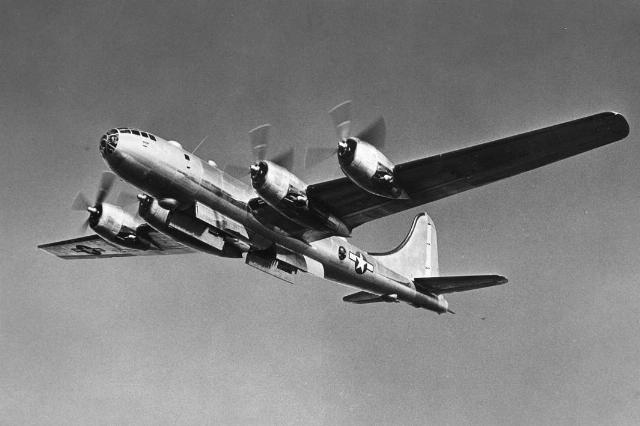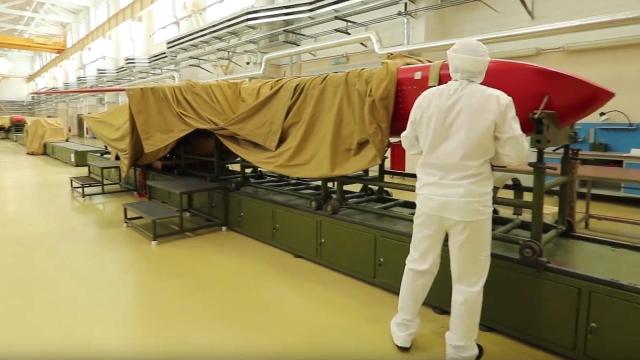They have been trying to create nuclear-powered systems since the middle of the last century
Both the Burevestnik cruise missile and the Poseidon underwater drone have become the world's first nuclear-powered vehicles ready for service. However, both unique systems had predecessors. Since the 1940s, the USSR and the USA have unsuccessfully tried to create flying and floating machines with nuclear reactors, but abandoned them because of their huge mass and danger. Read about the history of these ambitious projects and how technology became a reality decades later in the Izvestia article.
The predecessors of the Burevestnik
The idea to equip the aircraft with an atomic reactor came to the mind of American nuclear scientists in 1946. It was then that the NEPA (Nuclear Energy Propulsion for Aircraft) program was launched — it was planned to create an aircraft with a nuclear power plant and not just an airplane, but a strategic bomber with unlimited range. First, an experimental flight of a B-29 bomber with a capsule with radioactive materials on board was performed. It became clear that both the reactor and the crew's radiation protection would be massive and would require the most powerful aircraft.

The B-29 bomber
Image source: Photo: Getty Images
In the 1950s, an experimental Convair NB-36H laboratory aircraft was created to test nuclear reactors in flight and experiment with a nuclear jet plant - a turbofan engine with a nuclear heat exchanger that heated the air. The United States spent $7 billion on experimental programs, but only made sure that the mass of the propulsion system is huge and the efficiency is low. Plus, there were questions about flight safety — any crash of such an aircraft was fraught with serious radioactive contamination. In 1964, the project was closed.
The Soviet Union could not ignore such work, and we also began building an atomic bomber. The Tu-119 was developed on the basis of the most modern long-range Tu-95 strategist at that time. Work on the program for the creation of a nuclear aircraft power plant began in 1955. If successful, it was planned to produce both bombers and transport aircraft. The aircraft reactor was studied at the Kurchatov Institute under the supervision of academician A.P. Alexandrov. Tu-95LAL stand aircraft ("Flying Atomic Laboratory") It was refitted in 1961, and from May to August, 34 flights were performed on it. The flights were carried out with both "hot" and "cold" (switched off) reactors. Basically, the biological protection of the crew cabin was checked. According to the test results, the development of the Tu-119 was started. But as a result, in the early 1960s, work was stopped simultaneously with the Americans and for the same reasons - the nuclear power plant was too heavy and dangerous to operate.

Tu-95 aircraft
Image source: Photo: Getty Images/Bettmann/Contributor
But that's not all — another project was launched overseas in the late 1950s - the SLAM supersonic cruise missile, also known as the Pluto. The 20-meter-long product was supposed to carry 16 megaton thermonuclear bombs for an unlimited range. During the threatened period, the missiles were supposed to assemble over the waiting area in order to gain supersonic speed after receiving the order and begin flying along their routes at an ultra-low altitude. It was immediately created precisely as a Doomsday combat system — for the last thermonuclear war. Although at that time there was still no clear understanding of the consequences of the mass use of nuclear weapons. In the same 1964, the project was closed again for the same reasons — complexity, questionable effectiveness and contamination of the terrain of the allied countries, over whose territory the missiles were supposed to be in standby mode for a long time. In general, we were unable to create a secure solution at the turn of the 1950s and 1960s.
The predecessor of Poseidon
The underwater drone Poseidon also has its predecessor. His task is to approach the enemy's coast and detonate a powerful megaton thermonuclear charge. The same task was set in the early 1950s for the main armament of the first nuclear submarine of Project 627, the T-15 thermonuclear torpedo. In 1952, work began on a torpedo with a diameter of more than 1.5 m, which was supposed to carry the first thermonuclear charge RDS-6s. According to the idea of the nuclear designers, a submarine with one such torpedo could approach a large naval base or city at a direct firing range and launch a torpedo with a charge of 1-1.5 megatons. The preliminary design of the nuclear submarine was prepared in early 1954, but the navy took the new weapon with hostility. Admiral N. Kuznetsov, Commander-in-Chief of the USSR Navy, wrote at the end of that year that only two out of 80 naval bases of the potential enemy were suitable for the use of the T-15 torpedo at the required depths. In addition, conventional torpedoes with nuclear charges should cause more significant damage than a single thermonuclear one. And the submarine, after using a giant torpedo, became useless and unarmed. And the T-15 project was closed. A little later, in 1961, the idea of the T-15 torpedo was revived by Academician Sakharov as a possible means of delivering a 100-megaton charge to the shores of America. But the military refused to deploy such powerful weapons.

Poseidon underwater drone
Image source: Photo: REUTERS/Russian Defense Ministry
And a few words about whether or not such achievements of our nuclear scientists can be used not in weapons systems, but for civilian purposes. Of course, compact sources of electricity and heat will be in demand in civilian applications. In the future, stratospheric drones may be created on the basis of Burevestnik, which could monitor the upper atmosphere and, for example, act as repeaters for communication between ground-based objects and, say, artificial Earth satellites. The Poseidon power plant will be even more in demand for use on earth, underwater and in space. It is already clear that such reactors can become the main energy source for future space settlements on the Moon and other planets, as well as on large space stations. Surely such energy sources will be in demand in the Arctic and beyond. In general, following the military application, advanced technologies will enter the civilian sphere. And this is logical for technological progress.
Dmitry Kornev

